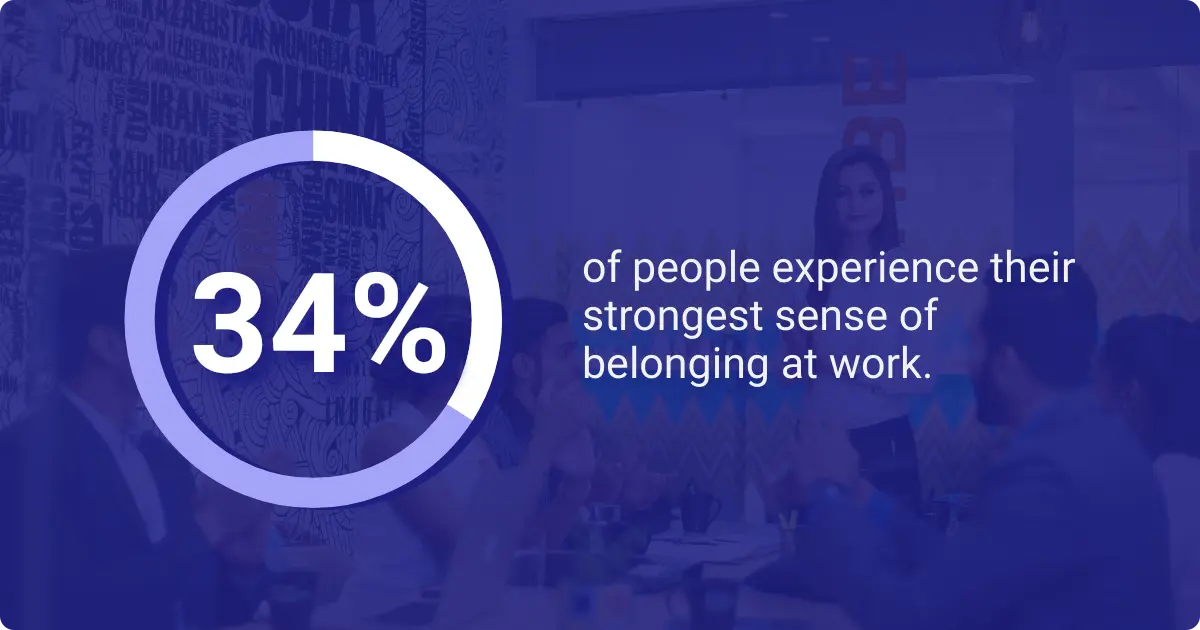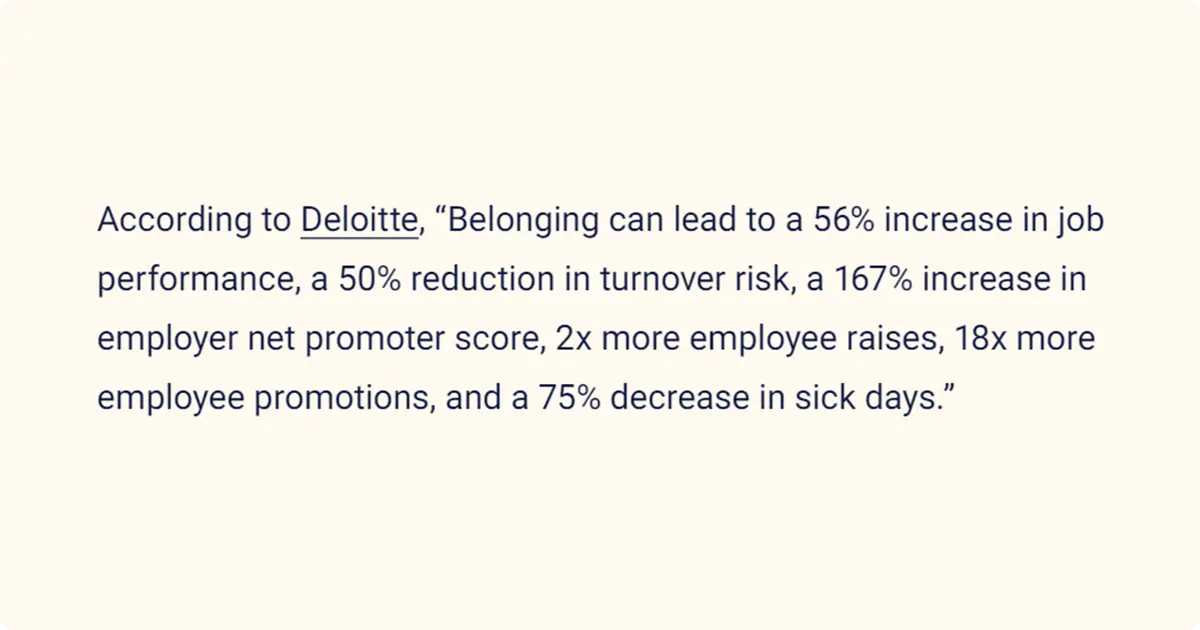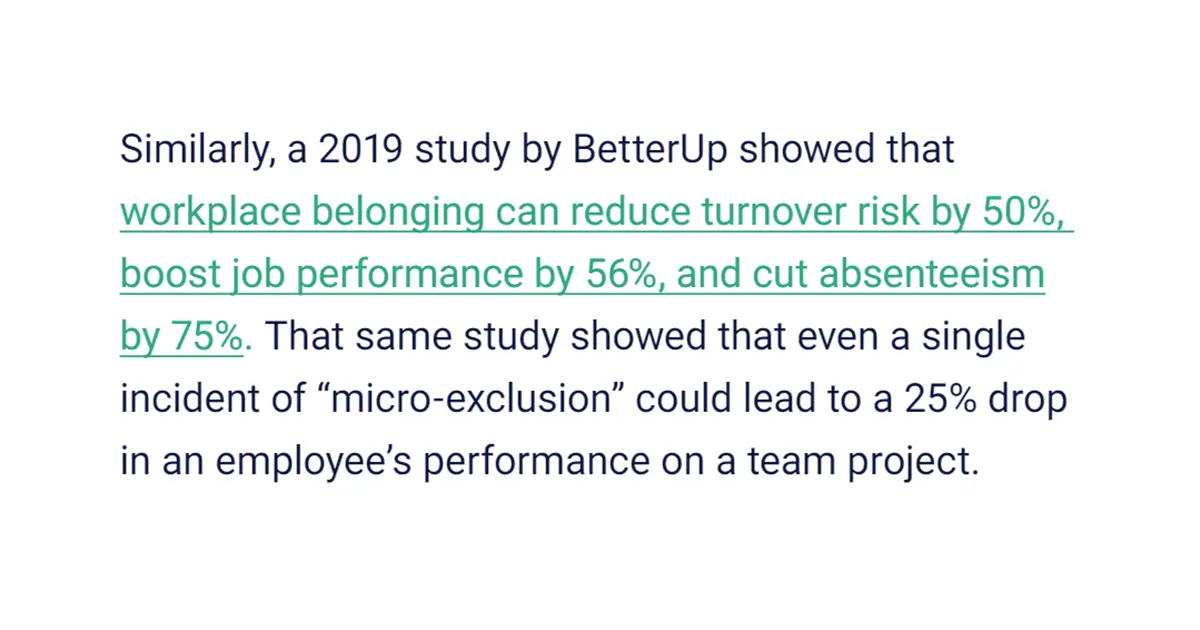What is Inclusive Leadership and Why is it So Important?

Every employee deserves to feel like they’re welcome, appreciated, and embraced in their workplace. Today’s workplaces need community-focused, diverse leaders who foster a deep sense of belonging in their employees. In fact, many people believe that weak leaders are the reason that so many workplace diversity programs fail, regardless of the $8 billion national investmentOpens in a new tab in this movement.
Read on to better understand what inclusive leadership is and learn how to manage your employees in the most supportive, inclusive way possible.
Why does inclusive leadership matter?
Inclusive leadership is the greatest gateway to creating and maintaining a happy, healthy, diverse team. By stepping into an advocacy role for all employees, inclusive leaders amplify unheard voices, gracefully help mitigate conflict, and encourage employees to grow and develop in uniquely impactful ways.
Join our exclusive webinar with Celeste Warren as she explains how you can contribute to a diverse and welcoming workplace.
This helps create a warm, nurturing culture in the workplace that fosters creative thinking, teamwork, and a strong culture of gratitude. Employees in these types of workplaces often feel encouraged to “bring their whole selves to work,” which bolsters authenticity, creativity, and psychological safety. Inclusive workplaces are also 36% more likelyOpens in a new tab to have above-average profitability.

What are some traits of inclusive leaders?
The most successful, inclusive leaders exemplify the following traits:
Authentic
The best leaders are those who don’t feel as though they have to “act” or “play a role” in the workplace. They bring their full selves to work and encourage their staff to do the same, embracing each unique individual rather than encouraging cookie-cutter speech, behavior, and ideologies.
Vulnerable
Showing emotion and humanity in the workplace should be seen as a sign of strength, not weakness. Because workplaces are communities, the individuals within them need to feel comfortable to experience the full range of human emotions. Leaders who model vulnerability communicate that their employees are safe and welcome to do the same.
A deep sense of love and belonging is an irreducible need of all people. We are biologically, cognitively, physically, and spiritually wired to love, to be loved, and to belong. When those needs are not met, we don’t function as we were meant to. We break. We fall apart. We numb. We ache. We hurt others. We get sick.
Open-minded
Inclusive leadership begins with open-mindedness and curiosity. By staying curious and being committed to learning about people who are different from themselves, these leaders are constantly developing new ways to be more welcoming and foster diversity.
In practice, inclusive leaders check their own biases and actively seek diverse perspectives. These actions work in tandem to create a more inclusive environment that helps all team members feel valued.
Culturally aware
It’s extremely important that leaders are aware of cultures, lifestyles, and belief systems that are different from their own. Not only does this foster empathy, inclusivity, and understanding, but it also creates a culture of respect and helps leaders keep a finger on the pulse during times of conflict, as they can foresee potential issues before they arise.
An important part of being culturally aware is being a lifelong learner who is always open and willing to take in new information and terminology. Those with a constantly expanding worldview tend to make the most flexible, inclusive leaders.
Equitable and fair
Quality leaders avoid playing favorites or engaging in nepotism in the workplace. The article 'The Importance of Inclusive Leadership DevelopmentOpens in a new tab' by IMD highlights the significance of this approach. They work diligently to ensure all employees have fair access to opportunities and promotions. They also monitor who’s being mentored and make sure that no unnecessary hurdles are being placed in front of any employees.
Collaborative
Inclusive leaders make sustained efforts to collaborate with their teams and encourage teamwork between employees. This strategic thinking in leadership helps dissolve workplace hierarchies and supports the belief that creative ideas can come from anywhere in the organization. It also shows by example that it’s imperative to pitch in and help one another when things get busy, showing through example that you truly are “all in this together.”
Humble
Ego-centric, hierarchical leaders usually do not exemplify inclusive traits or values. Over-emphasizing roles, titles, and accolades undermines effective communication in leadership, preventing employees from communicating authentically and thriving.
On the other hand, modest, encouraging leadersOpens in a new tab who don’t boast about themselves can forge stronger employee-employer relationships and inspire employees to grow in healthy, sustainable ways.
Another element of humility is being open to feedback from the team. Inclusive leaders are also open to hearing about how they can improve and are quick to apologize and rectify the situation if something does go wrong. Not only does this create more opportunities for human connection in the workplace, but it also models positive behaviors and accountability for everyone on the team.
What does inclusive leadership improve?
Inclusive leadership greatly improves company culture and creates a more positive employee experience, but it also can have measurable, quantitative effects. In fact, a recent study showed that organizations with strong diversity and inclusion are 70% more likely to break ground in new markets than their competitors.
Inclusive teams are also 80% more likely to outperform their competitors in team-based assessments, according to a recent study by Deloitte.
Having stronger leaders can also increase productivity, reduce turnover, improve employee net promoter scores, encourage employees to move up in the company, and help foster a sense of well-being in the workplace.

Want to learn how to hone your leadership style to see these positive changes in your workplace?
How can you move from theory to practice and increase employees’ access to feelings of belonging and inclusion? Here are 3 proven and powerful ways, backed with proof points from Deloitte, Gallup, various scholars, and our own customers.
Studies have also shown that even small instances of feeling excluded, othered, or discriminated against in the workplace can have massive ripple effects on employees. Although the concept of inclusion itself can seem difficult to quantify or measure, the after-effects of employees feeling pushed out or excluded are very clear.

Want to see if your company’s inclusion efforts are really working?
Read our insightful guide to learn effective strategies and metrics for evaluating your company's inclusivity efforts.
Final thoughts
Inclusive leadership begins with open-mindedness, curiosity, and respect for all people, from your managers and C-suite. Modeling this type of behavior in the workplace sets a standard of behavior for all employees and fosters a more welcoming, diverse culture. Over time, this type of positive environment can help decrease absenteeism, increase productivity, and lead to lower rates of turnover in your organization.
About the author
Anna Picagli
As an RYT500 yoga instructor and a Reiki Master Teacher, Anna is an advocate for holistic wellness, especially within the workplace. She’s extremely passionate about the brain-body connection and exploring how mental and physical wellness intersect.
Anna has experienced firsthand how chronic stress, overworking, poor management, and other organizational issues can lead to extreme burnout. Knowing the impact that a toxic work environment can have on a person’s body, psyche, and general sense of well-being, she now works to direct others away from facing the same fate.
As Workhuman’s Senior Content Specialist, Anna is a regular contributor to Workhuman iQ reports and aims to create resources that company leaders can reference to help improve their culture and empower their employees, creating healthier workplaces for everyone.
In her free time, she’s an avid solo traveler, a voracious reader, and a seasoned home chef. You can learn more about Anna’s work on LinkedIn or through the Yoga Alliance.